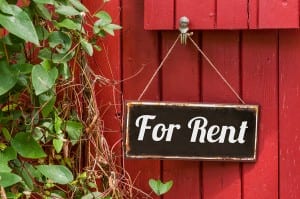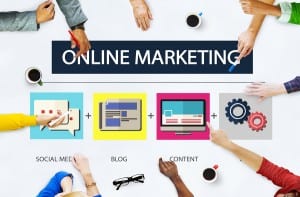 The last year (2014) has been a rocky road for those in the industry who have put all their social media eggs in the Facebook basket. Many tourism businesses and destinations saw a dramatic drop in their organic Facebook reach last year. This impacted many. This meant that fans were not seeing posts. Then it became official that this was is a deliberate move as part of Facebook’s revenue-generating strategy by making businesses pay more for fans, exposure to fans, and the opportunity to engage with fans.
The last year (2014) has been a rocky road for those in the industry who have put all their social media eggs in the Facebook basket. Many tourism businesses and destinations saw a dramatic drop in their organic Facebook reach last year. This impacted many. This meant that fans were not seeing posts. Then it became official that this was is a deliberate move as part of Facebook’s revenue-generating strategy by making businesses pay more for fans, exposure to fans, and the opportunity to engage with fans.
As a result, less than 4% of fans are now likely to see your organic posts unless you are willing to pay. It was of course, not always like this, and many hotels, tourism businesses, and destinations have built beautiful, inspirational Facebook business pages and connections with customers over many years.
What many in the industry did not understand is that we were effectively acting as a tenant on rented space, not a freeholder – the landlord could come along at any time and increase the rent or start charging you for amenities. And if you can’t afford the increase, you might have to move out, use less space or have fewer amenities. All of a sudden, budgets had to be found.
The case for building your own marketing assets is more important than ever. For too long destinations, businesses and the broader tourism industry have relied on social media as an easy access point to current and potential customers. Overnight, many in the industry lost control of their content and full control over what was shown on their  Facebook page. This was a devastating lesson for many.
Facebook page. This was a devastating lesson for many.
And it is set to get worst. In November 2014 Facebook announced that from January 2015 it will restrict overtly promotional content, even for promotional posts. A recent member survey told Facebook they wanted to see more stories from friends and pages they care about and less promotional content. As a result, Facebook will restrict content that is too promotional or pushy.
The question we have asked over the last year is have we as an industry over been focusing our efforts on social media at the expense of our own branded websites, owned content, and email lists? I believe the answer is a resounding yes.
Admittedly, marketing budgets have diminished over the years, hence the attraction of social media. The entry costs were low and impact high. In particular, Facebook and other social media platforms have been good for the hotel and the broader tourism industry. It provided an easy and quick way to create an online presence for many in the tourism industry.
Elaborating on the concept, Jesse Desjardins, Head of Social at Tourism manager explains
“…social media platforms like Facebook and Instagram have given our industry an incredible ability to engage with consumers. Without a doubt, these platforms will continue to add value to our businesses, but I always recommend to the tourism operators that they also don’t neglect their websites, the place where consumers go to take next step”
Jesse is right. We have been posting, creating booking buttons and timelines every day on a rented property, and now it is time to focus on creating amazing content, videos, websites, and blogs – online real estate that we own and that we have full control over. And, we need to make our websites a place for our customers to seek inspiration and book without complication.
 A shift in tactical execution of online marketing
A shift in tactical execution of online marketing
It is time for tourism marketing executives to shift tactical executions to focus more on building and creating content that is owned and to view social media as a means of distribution rather than an online marketing tactic in its own right. We need create strategies that should be centred around creating a strong online presence for hotels, a presence that we own and have full control over.
Compelling Travel Content
At the centre of your owned media strategy is content. Content should be informative, interesting, and compelling (not overly promotional).
It is important that all content shares brand consistency. It needs to breathe your brand, your tone of voice, look, and feel. It should connect with your customers and talk to their pain points.
Create content that speaks to your customers at every stage on their path to purchase from providing when they are dreaming or planning a trip to somewhere they can share feedback everywhere, preferably on social media
Content needs to speak directly to the target market as algorithms become more sophisticated many being based on artificial intelligence – semantic search.
Variety of content
There should be a variety of content in your owned media strategy with a focus on what will appeal to your customers on whichever social media platform they are hanging out  on.
on.
Travel content has recently taken off in Youtube. According to a recent study Google conducted, two out of three U.S. consumers watch online travel videos when they’re thinking about taking a trip.
They are most likely to watch travel vlogs (user-generated) and branded content (destinations, hotels, airlines, etc). But the most compelling statistic is that viewership of hotels, resorts, and accommodation has increased significantly 232% YoY (2012/2013).
Videos do not have to be high-value professional productions. Self-produced videos lend a certain authenticity to your hotel. This tactic can be completed on the smell of fresh air to a budget of hundreds of thousands.
Videos are not only a great way to connect with your customer, it can also help the potential customer visualise themselves at your hotel or accommodation. A business traveller can get a sense of the space in the room, can see the PowerPoint/socket sits above the desk or the mother planning a family holiday can get a sense of the space in the room.
Visually Amazing Travel Websites
In the current landscape, hotel websites, as a rule, have been neglected. I see many major chains without mobile optimisation, let alone compelling content. Travellers are constantly looking for a source of inspiration – both business and leisure. Unfortunately hotel and accommodation websites tend to be light on facts, imagery and content that Wow’s the traveller.
We are in the travel business. An exciting industry, however, we often struggle to connect with the traveller and talk to their pain points. Too much focus has been on factual and functional brand values rather than emotive brand benefits.
Blogs
Blogs and the written word are fundamentally important when it comes to content creation. Firstly, stories help connect your potential customer to your brand. Secondly and on a more practical front it can help search engines find you.
Blogs with personal stories that talk directly to your personas and their pain / trigger points can result in your brand making it to the consideration set in a competitive market.
Your blog combined with beautiful images will sit well as a social media post and is likely to be engaged and interacted with by travellers who have chosen to like you.
Email lists and database
All of this beautiful, compelling and authentic content you create, gives you a great excuse to communicate with your database. It is important to remember that those on your database have signed up because they want to hear from you. Make it worth their while through a balanced combination of great stories, videos and imagery as well as genuine offers.
Social media as a distributer to content you own
As you create each piece of content, you build on your owned assets. Make sure you completely understand where your customers are hanging out on social media so that you can distribute your content to as wider reach as possible.
Compelling content means that your brand is likely to be shared, engaged with, interacted with and much more. Social media signals mean that the search engines pick up on your authority and influence and you will be more likely to be connected with your customers in semantic search.
 Social media role still vital for hotels and the tourism industry.
Social media role still vital for hotels and the tourism industry.
Facebook and other social media platforms like Twitter and Google+ still have a role to play. We still need promote our blogs and videos through social media, just not build our entire marketing efforts on them. There are plenty of ‘free’ or cheaper alternatives to Facebook (at the moment) for promotion . Try Google +, Twitter, Instagram, Pinterest and better still, ask all of your customers where ‘they hang out’ on social media. The lesson learnt is to try not to put all your marketing eggs in one basket as we never know what is around the corner .
So now it is time to move out of your rented space, get your own place, focus on building your own online real estate portfolio. Once you have done that, add to it on a regular basis, renovate occasionally to freshen up and regularly promote your hard work.
Do you want to hear more from us?
Want to be kept up to date with the latest travel and tourism insights? Join Our Mailing List. Every 2 weeks, we send the latest practical insight for you to apply to your business and destination marketing.






Leave a Reply